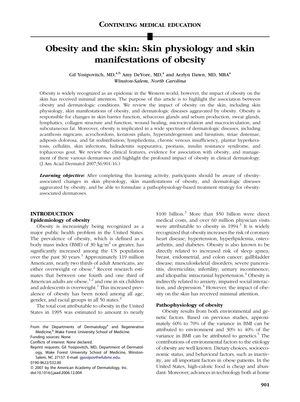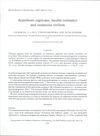Obesity and the Skin: Skin Physiology and Skin Manifestations of Obesity
May 2007
in “
Journal of The American Academy of Dermatology
”
obesity skin physiology acanthosis nigricans striae distensae hidradenitis suppurativa insulin resistance stasis dermatitis venous ulcerations compression leg elevation skin infections psoriasis weight loss medication dosing dermatologists primary care physicians skin barrier function gland activity lymphatic flow wound healing skin conditions skin treatments

TLDR Obesity affects skin health, causing conditions like acanthosis nigricans and may require different treatment approaches.
The 2007 document outlines the significant impact of obesity on skin physiology and the manifestation of various skin conditions. Obesity alters skin functions such as barrier function, gland activity, lymphatic flow, and wound healing, and is associated with dermatoses like acanthosis nigricans, striae distensae, and hidradenitis suppurativa. The paper reports that 74% of an obese population showed signs of acanthosis nigricans, which is often linked to insulin resistance. Conditions like stasis dermatitis and venous ulcerations, prevalent in obese individuals, can be treated with methods like compression and leg elevation. Obesity also increases the risk of skin infections and chronic conditions like psoriasis, which may be alleviated by weight loss and specific medications. The document stresses the need for dermatologists to consider obesity when treating skin conditions, as it affects medication dosing and efficacy, and to collaborate with primary care physicians to address the broader health implications of obesity.



